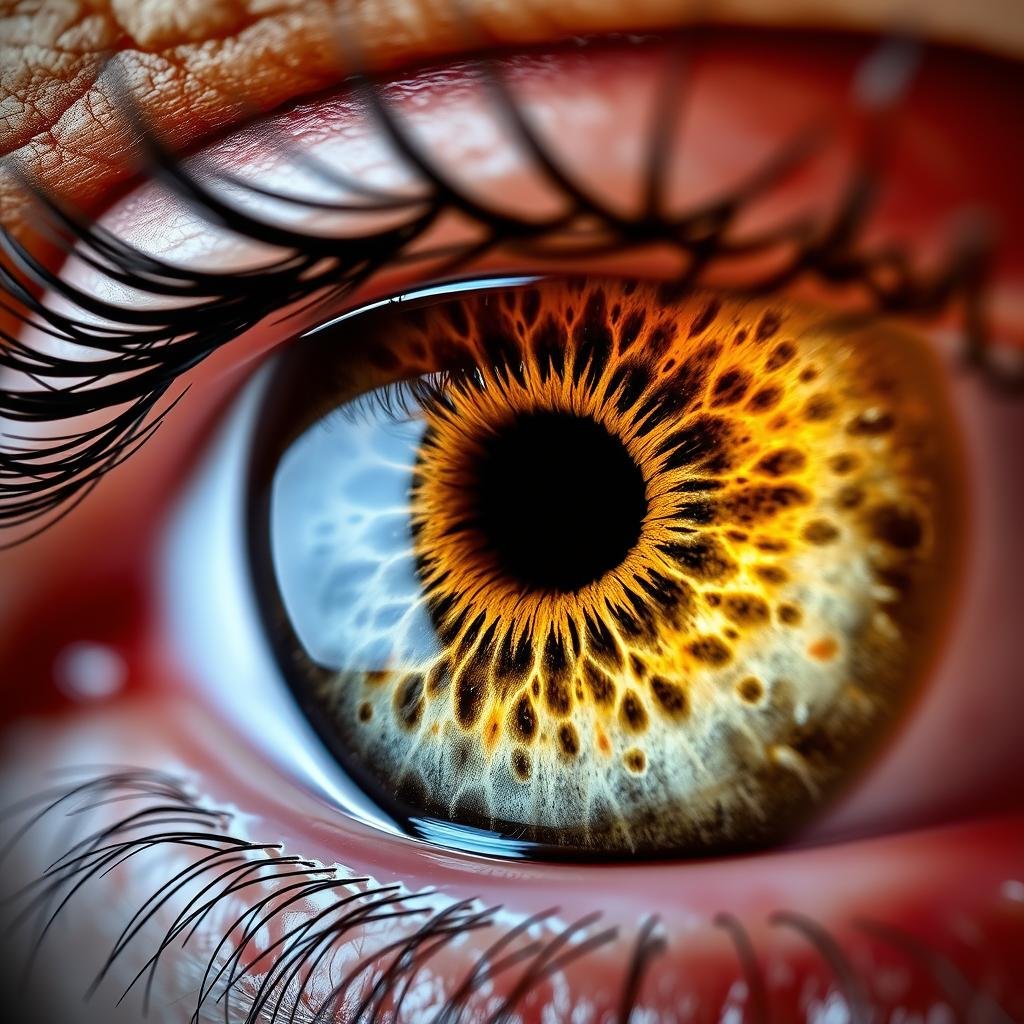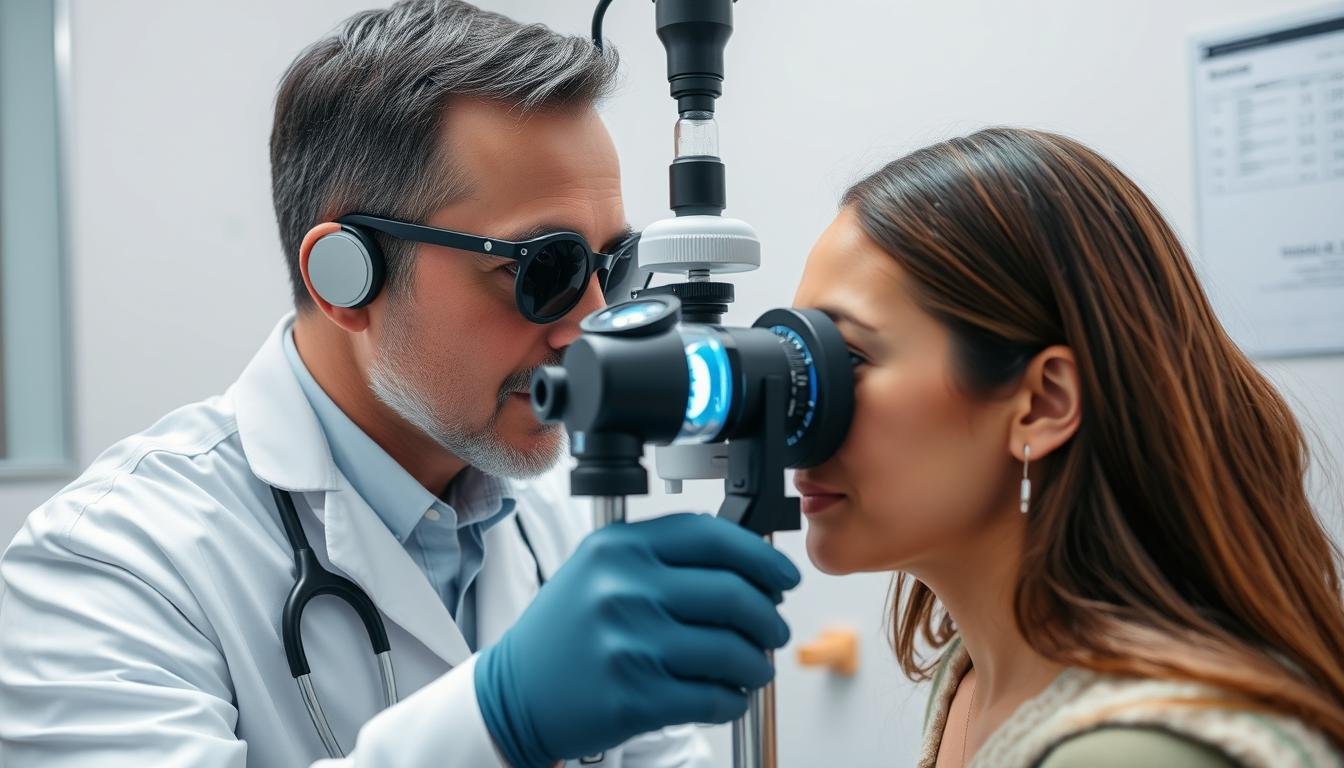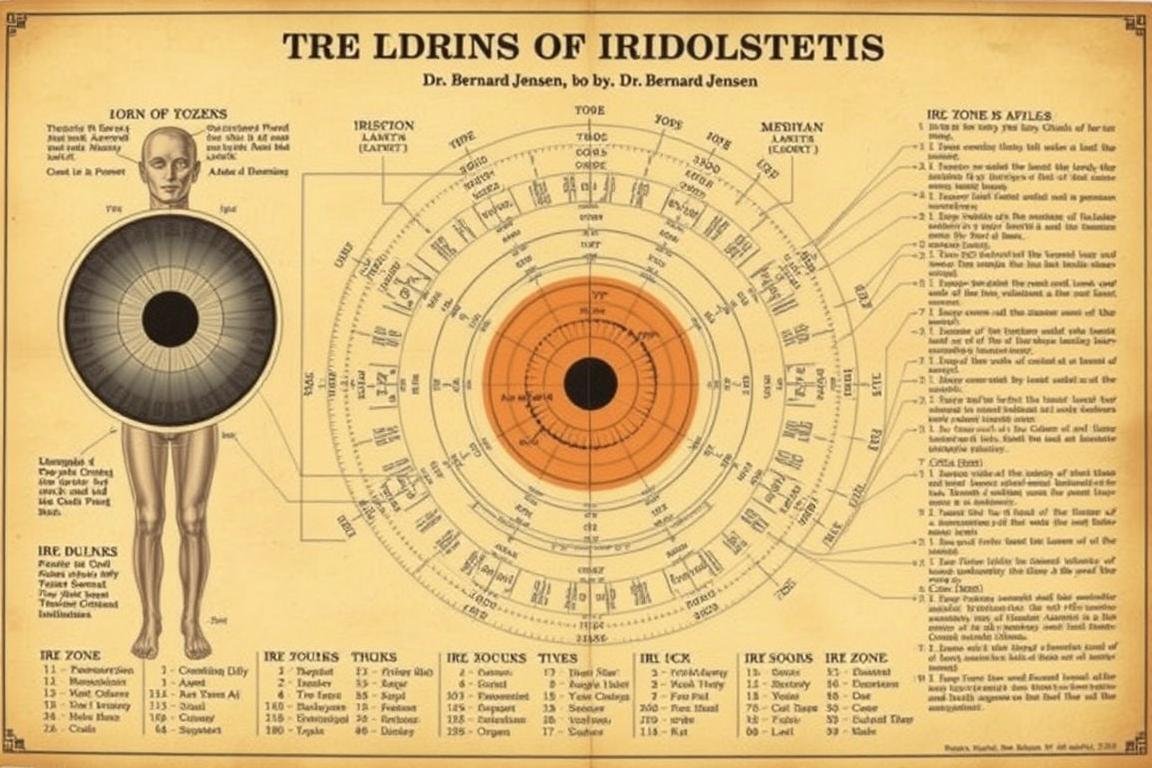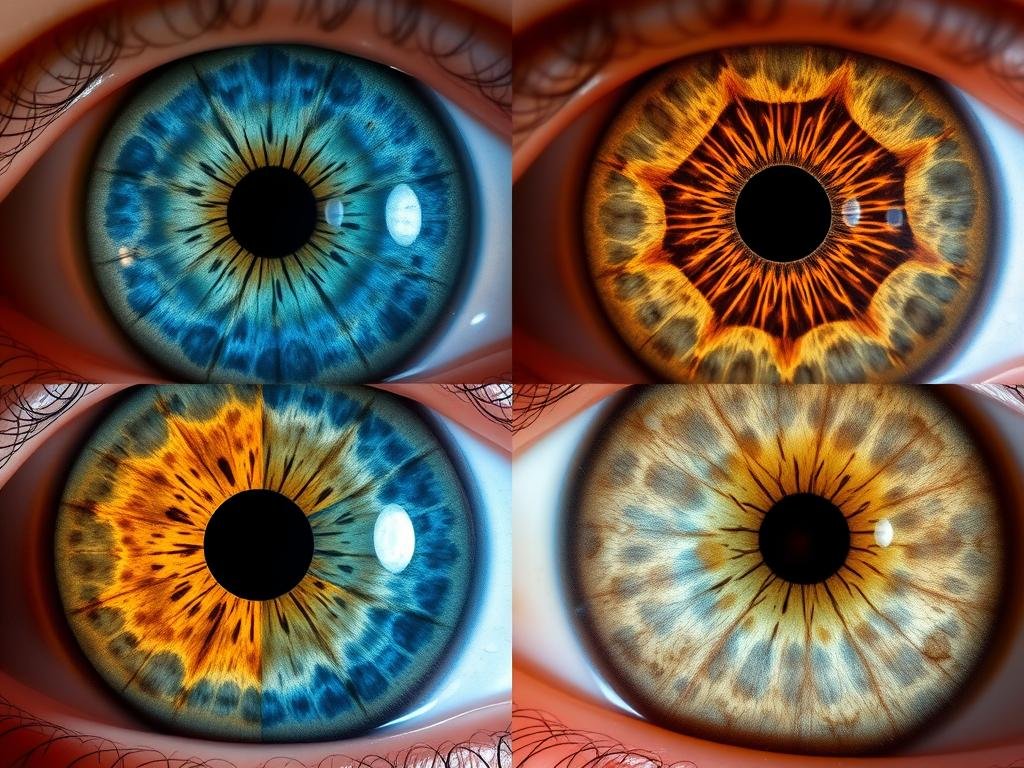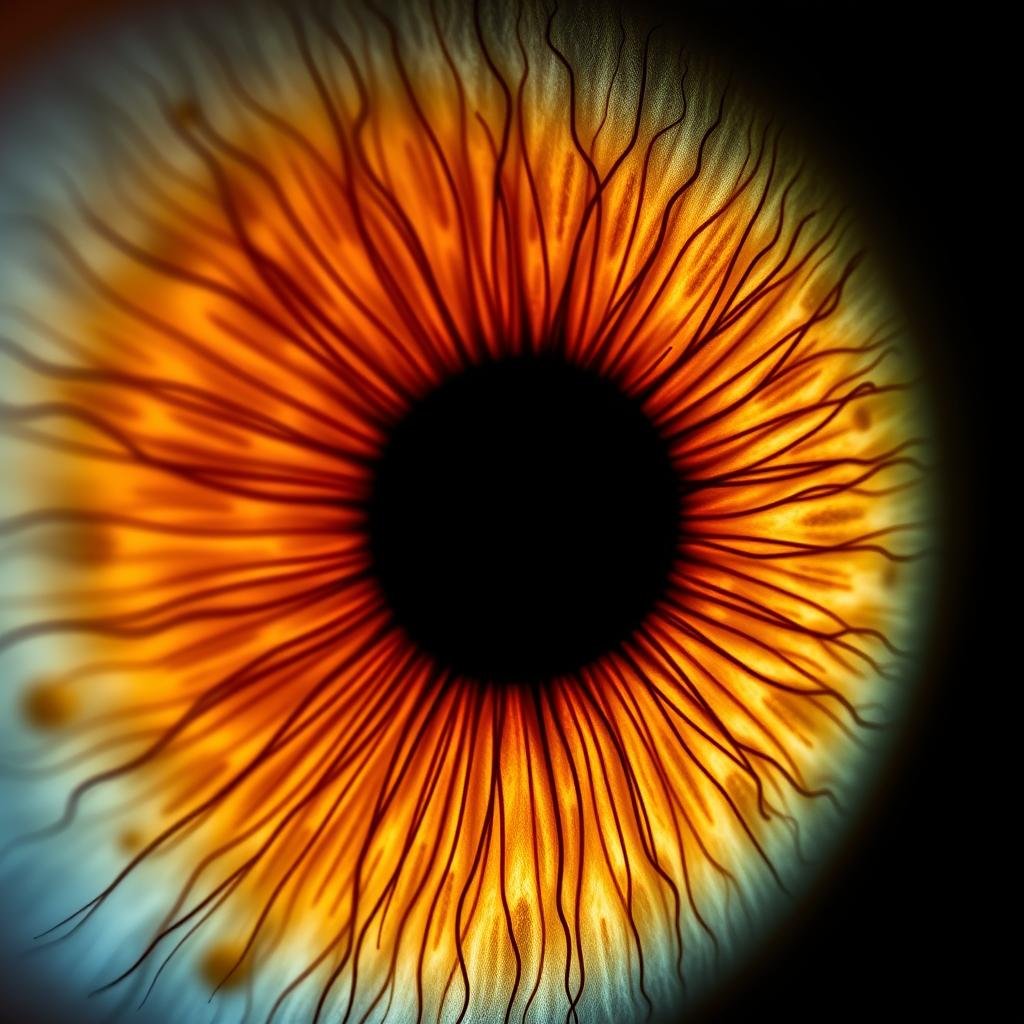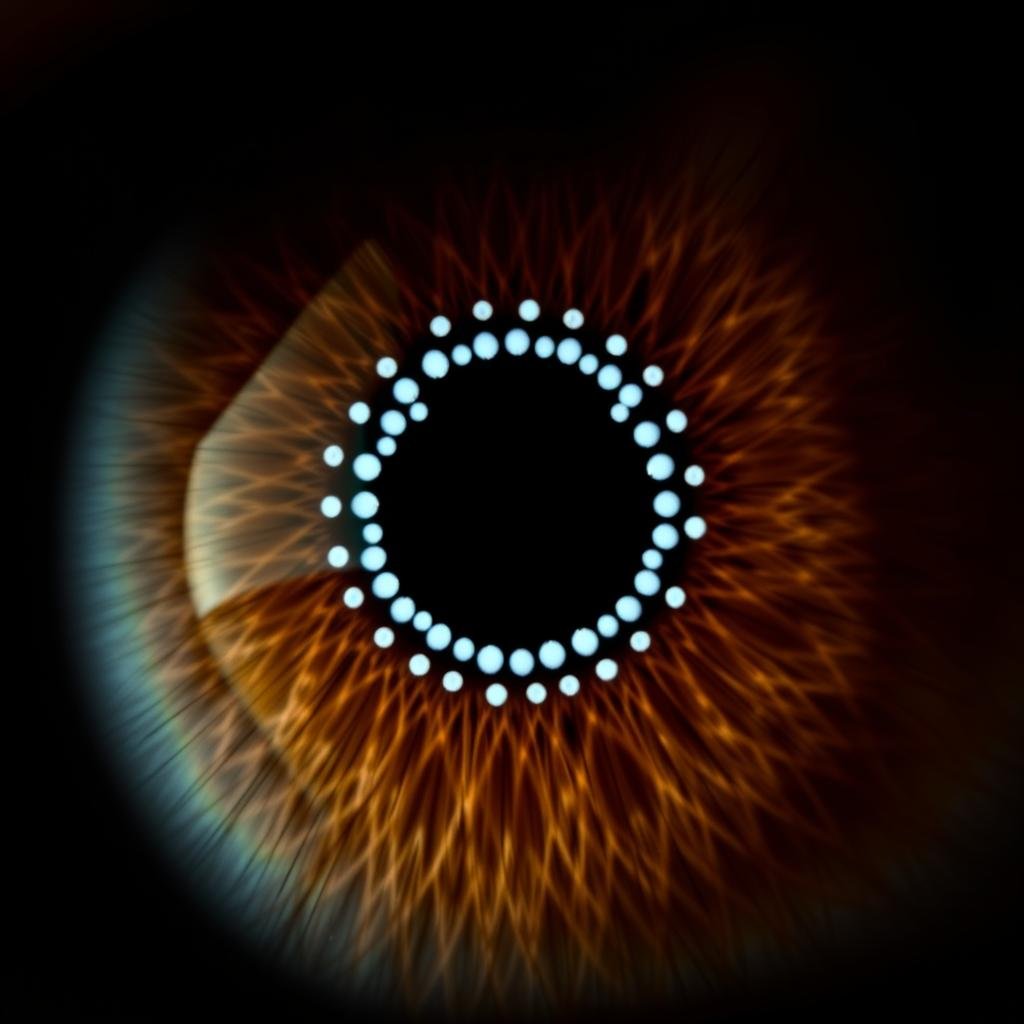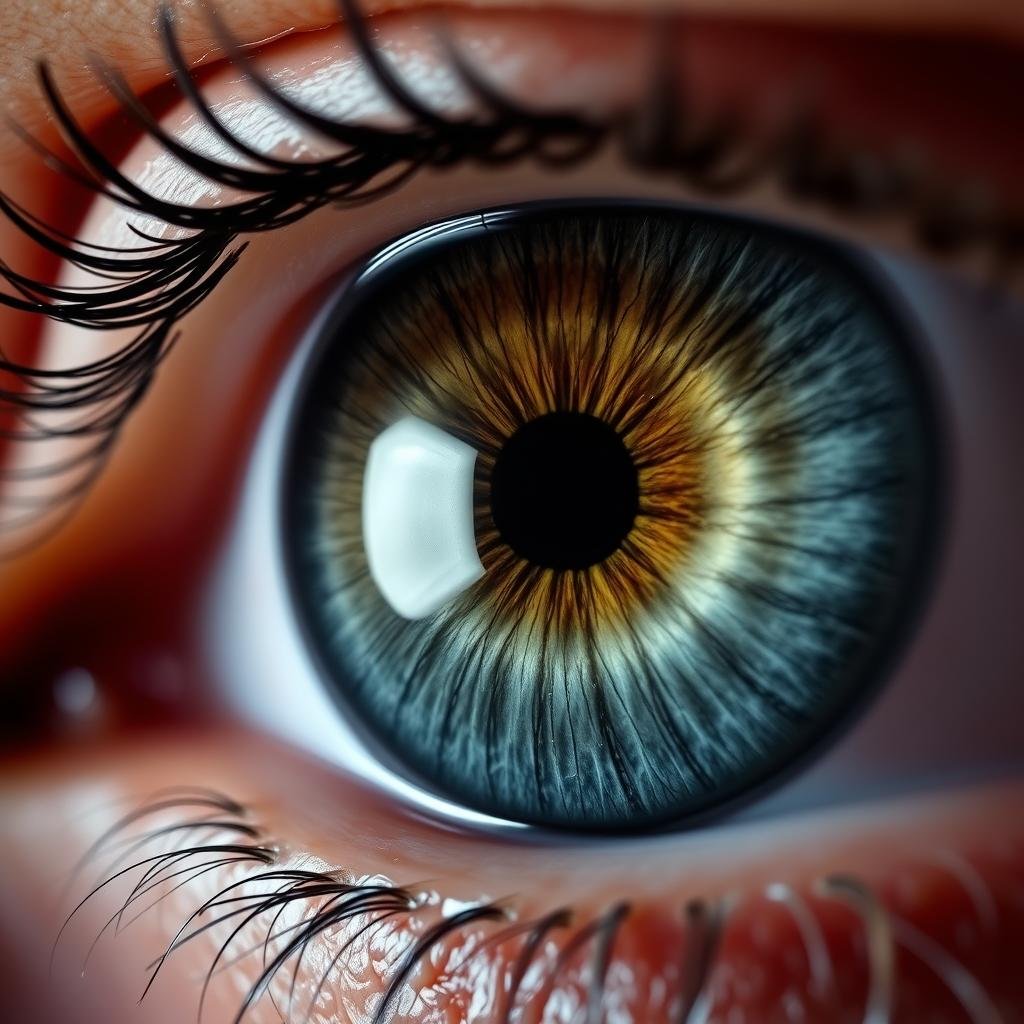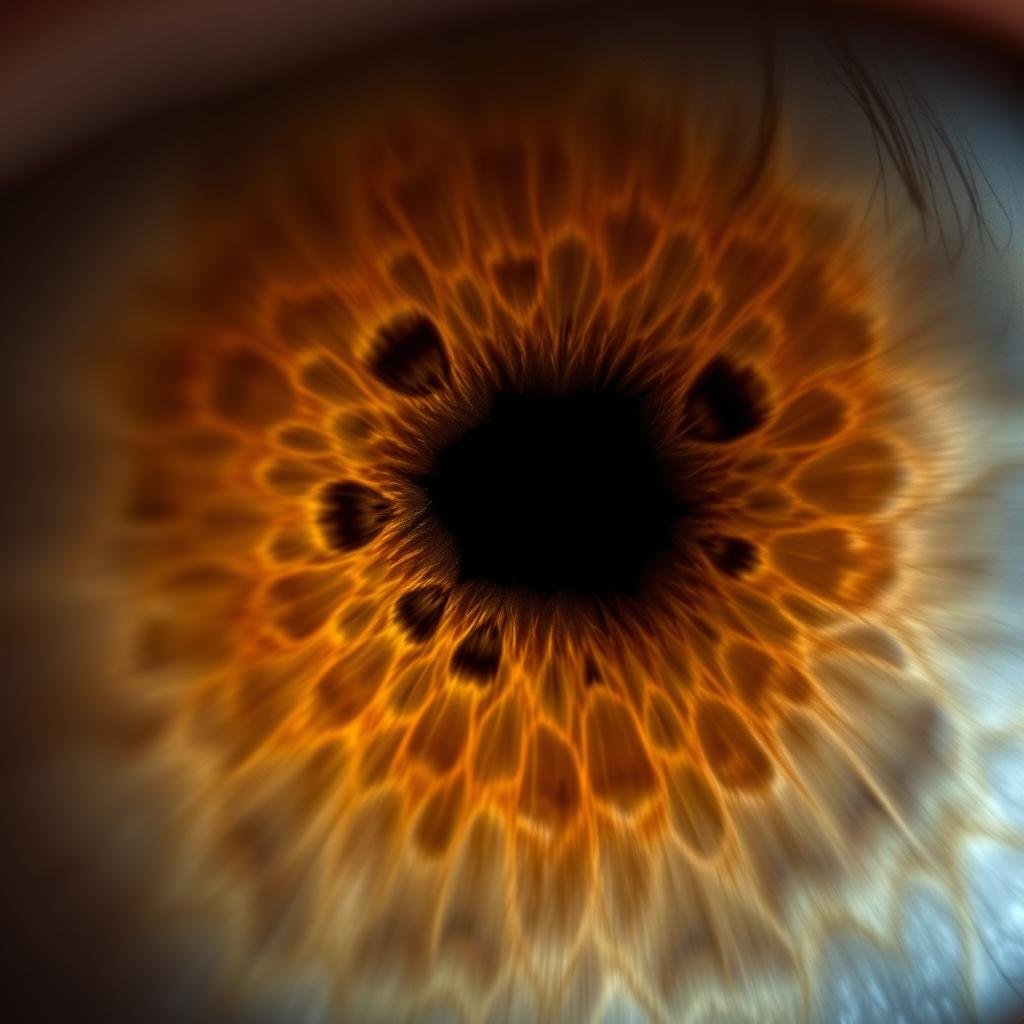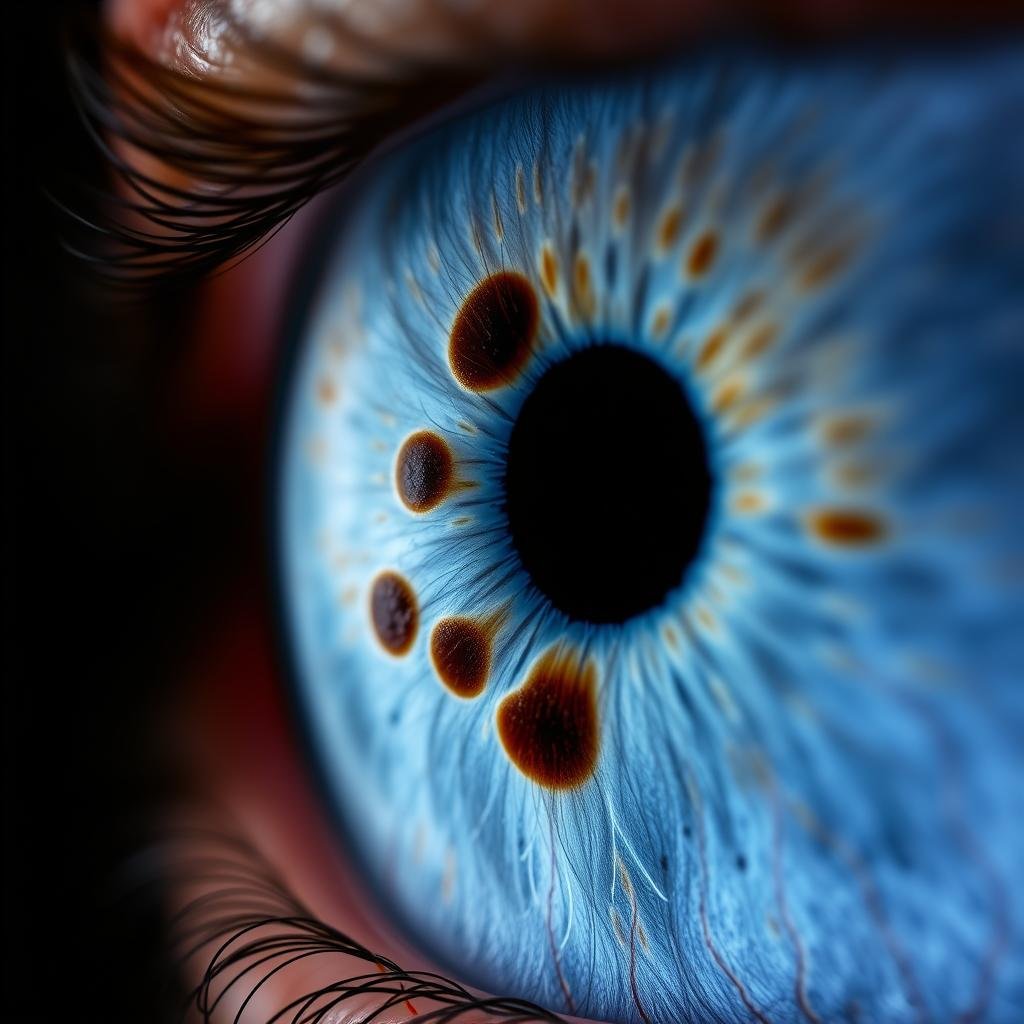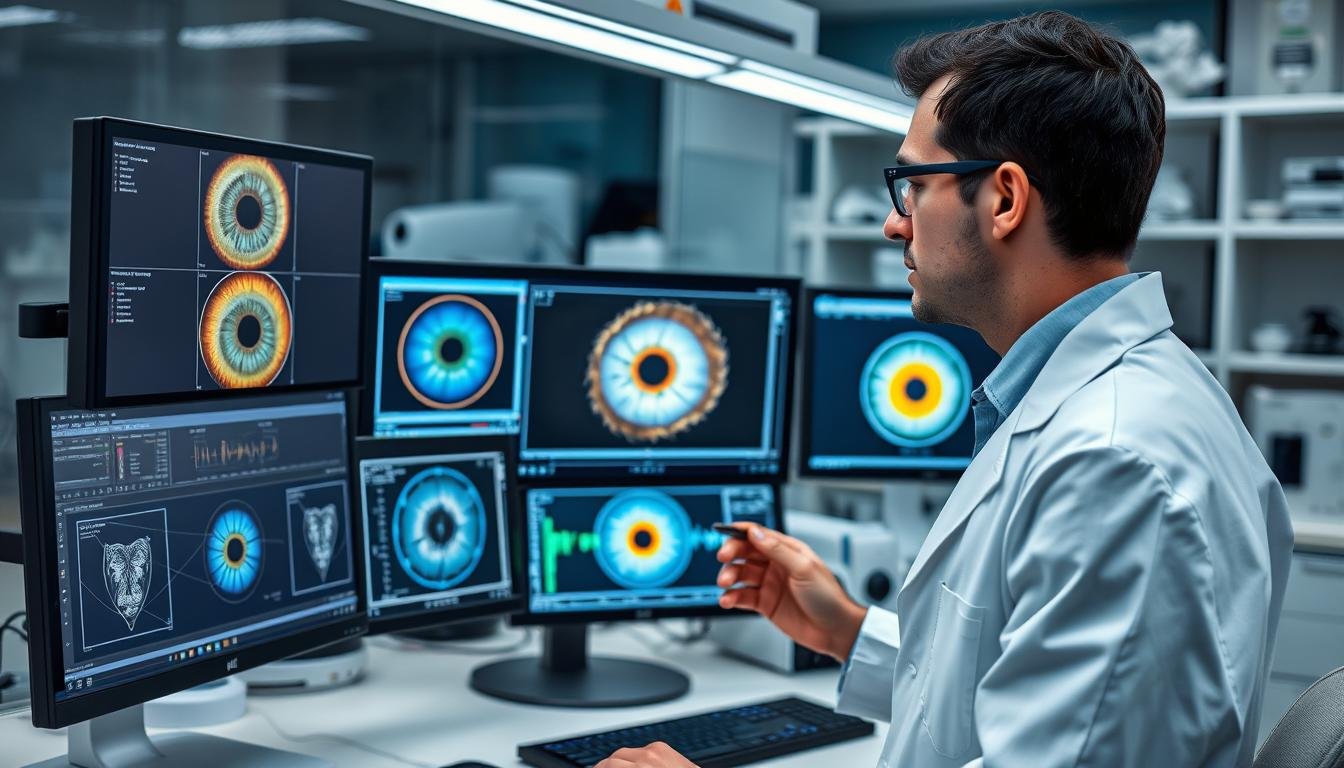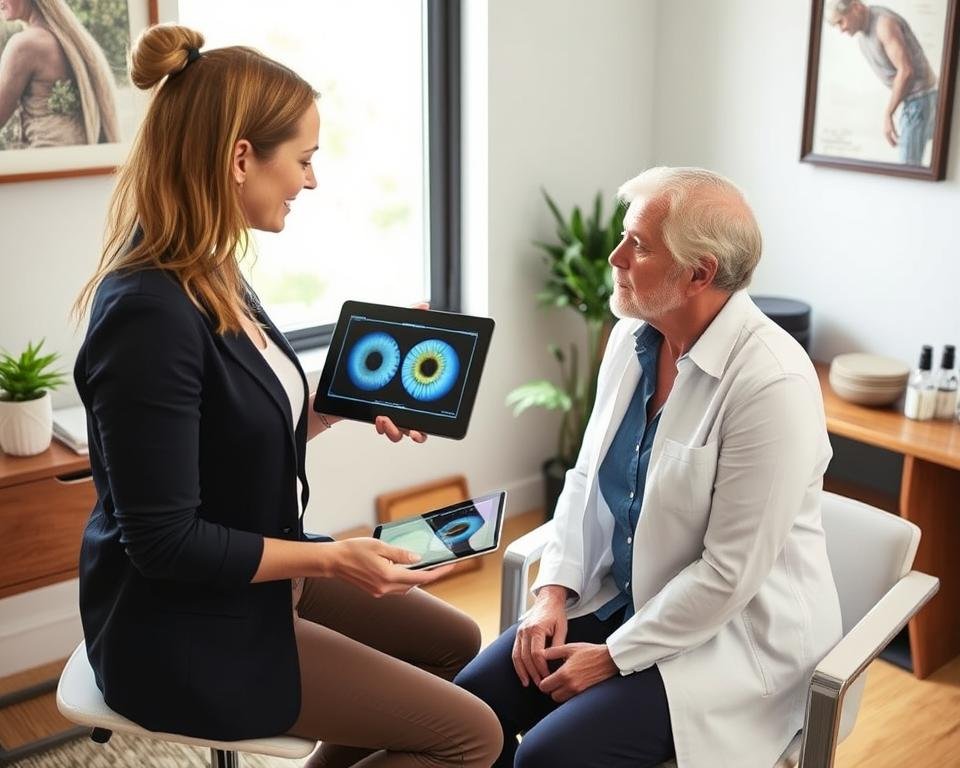The human iris has fascinated healers and medical practitioners for centuries. With its intricate patterns and unique colorations, some believe it serves as a map to our overall health. Iridology—the study of the iris for health assessment—remains a controversial yet persistent practice in alternative medicine. This comprehensive guide explores what iridology is, how practitioners use it, and what science has to say about its validity.
Iridology ڇا آهي ۽ اهو ڪيئن ڪم ڪندو آهي؟
Iridology (pronounced eye-rid-ology) is the study of the iris—the colored part of the eye—to identify potential health concerns and constitutional strengths and weaknesses. Practitioners believe that each area of the iris corresponds to different organs and systems within the body, creating what they describe as a “map” of the body’s condition.
According to iridology theory, changes in iris fibers, pigmentation, and structure can indicate inflammation, toxin accumulation, or organ dysfunction in corresponding body areas. Practitioners use specialized equipment like magnifying lenses, cameras, and comparison charts to analyze these patterns.

During an iridology session, the practitioner typically takes high-resolution photographs of both irises. These images are then compared against standardized iridology charts that divide the iris into approximately 60 zones, each corresponding to different body parts. The right iris is said to reflect the right side of the body, while the left iris corresponds to the left side.
It’s important to note that iridologists do not claim to diagnose specific diseases but rather identify areas of potential weakness, inflammation, or toxicity that might require attention.
The History and Origins of Iridology
While some proponents suggest that forms of iris analysis existed in ancient Egypt, China, and India over 3,000 years ago, modern iridology is largely credited to Hungarian physician Ignatz von Peczely in the 19th century.
According to popular accounts, von Peczely noticed as a child that an owl he had accidentally injured developed a dark mark in its iris. This observation sparked his interest in the connection between iris markings and physical injuries or conditions. Years later, as a physician, he developed the first known iris chart in 1880, mapping correlations between iris markings and various health conditions.
In the early 20th century, Swedish homeopath Nils Liljequist further developed these concepts after observing changes in his own iris following medication. American chiropractor Bernard Jensen later popularized iridology in the United States during the 1950s, creating detailed iris charts that remain influential in modern practice.
How Iridology Practitioners Claim to Detect Health Issues
Iridology practitioners use several key indicators when analyzing the iris for potential health concerns:
Iris Constitution Types
Practitioners first identify a person’s basic iris type or “constitution,” which they believe indicates genetic predispositions. The main types include:
- Lymphatic (blue iris) – Associated with sensitivity to respiratory and lymphatic issues
- Hematogenic (blue-brown mix) – Linked to blood and circulatory tendencies
- Biliary (brown iris) – Connected to digestive and liver function
- Neural (mixed patterns) – Related to nervous system sensitivity
Common Iris Signs and Their Claimed Meanings

ريڊيل فروز
Spoke-like lines extending from the pupil outward are interpreted as signs of digestive weakness or poor nutrient absorption.

Lymphatic Rosary
A ring of white dots or clouds around the iris is associated with lymphatic system congestion or immune challenges.

اسڪرف رم
A dark ring around the outer edge of the iris is believed to indicate poor skin elimination and potential toxin buildup.

نروس رِنگس
Circular rings in the iris are interpreted as signs of nervous tension, stress, or anxiety patterns.

Lacunae/Lesions
Enclosed darker areas in the iris are associated with potential organ dysfunction or tissue damage in the corresponding body area.

رنگ جا نشان
Dark spots or flecks in the iris are believed to indicate toxin deposits or localized inflammation in specific organs.
Scientific Perspective on Iridology’s Validity
The scientific and medical communities have extensively examined iridology’s claims, and the consensus among researchers is largely skeptical. Multiple controlled studies have failed to validate iridology as a reliable diagnostic method.
حامي دليل
- The iris contains thousands of nerve endings connected to the brain
- Anecdotal success stories from practitioners and clients
- Non-invasive approach to health screening
- May encourage preventative health measures
سائنسي خدشات
- Lack of anatomical connection between iris and most body organs
- Controlled studies show poor diagnostic accuracy
- Iris patterns remain largely stable throughout life
- Risk of missed or delayed diagnosis of serious conditions
A significant 1979 study published in the Journal of the American Medical Association tested the abilities of three iridologists to detect gallbladder disease from iris photographs. The practitioners could not reliably identify patients with confirmed gallbladder conditions, performing no better than chance.
Similarly, a 2000 systematic review published in the British Medical Journal concluded that “iridology is not a reliable method of diagnosis” after analyzing all available controlled trials. The review warned that iridology could potentially lead to inappropriate health advice or delayed proper medical treatment.

Iridology vs. Conventional Medical Diagnosis
| پاسو | Iridology | روايتي دوائون |
| Diagnostic Approach | Examines iris patterns to identify potential health weaknesses | Uses multiple diagnostic tools (lab tests, imaging, physical exams) to identify specific conditions |
| Scientific Validation | Limited scientific support; not recognized by mainstream medicine | Based on peer-reviewed research and clinical trials |
| Practitioner Training | Varies widely; no standardized medical requirements | Standardized medical education with extensive clinical training |
| Treatment Focus | Often emphasizes preventative measures and holistic approaches | Focuses on treating identified conditions with proven interventions |
| Regulatory Oversight | Minimal regulation in most countries | Heavily regulated with licensing requirements |
While conventional medicine relies on measurable biomarkers, imaging studies, and physical examinations to diagnose specific conditions, iridology takes a more holistic approach focused on constitutional tendencies and potential weaknesses. Many healthcare professionals suggest that these approaches need not be mutually exclusive—some patients use iridology as a complementary tool while maintaining regular medical care.
Potential Benefits and Controversies of Iridology
امڪاني فائدا
Despite scientific skepticism, some individuals report value in iridology consultations:
- Holistic Health Perspective – Encourages viewing health as an interconnected system rather than isolated symptoms
- Preventative Focus – May motivate lifestyle changes before serious health issues develop
- Non-invasive Assessment – Requires no blood draws, radiation, or uncomfortable procedures
- Personalized Approach – Considers individual constitutional differences rather than one-size-fits-all recommendations
Key Controversies
Several significant concerns have been raised about iridology practice:
Important Consideration: Iridology should never replace proper medical diagnosis. Relying solely on iridology could potentially delay necessary medical treatment for serious conditions.
- Diagnostic Reliability – Multiple studies show poor accuracy in identifying specific health conditions
- Practitioner Variability – Lack of standardized training leads to inconsistent interpretations
- Potential Harm – May cause unnecessary anxiety or false reassurance about health status
- Financial Concerns – Sessions and recommended supplements can be costly with questionable benefit

Frequently Asked Questions About Iridology
ڇا iridology سائنسي طور تي ثابت ٿيو آهي؟
No, iridology has not been scientifically validated through rigorous research. Multiple controlled studies, including a significant review published in the British Medical Journal, have found that iridology practitioners cannot reliably diagnose health conditions through iris examination. The scientific consensus among medical researchers is that iridology lacks sufficient evidence to support its diagnostic claims.
Can iridology replace medical diagnosis?
No, iridology should not replace conventional medical diagnosis. Even practitioners of iridology generally acknowledge that it is best used as a complementary assessment tool rather than a replacement for medical care. Serious health concerns should always be evaluated by qualified healthcare professionals using evidence-based diagnostic methods. Relying solely on iridology could potentially delay necessary treatment for serious conditions.
How much does an iridology session typically cost?
Iridology session costs vary widely depending on the practitioner’s experience, location, and the depth of analysis provided. Basic sessions typically range from -0, while comprehensive analyses with detailed reports may cost 0-0 or more. Some practitioners include iridology as part of broader naturopathic or holistic health consultations.
Do iris patterns change with health improvements?
This is a point of contention. Some iridologists claim that certain iris markings can change as health improves, particularly regarding inflammation levels or toxin accumulation. However, ophthalmologists and medical researchers maintain that iris structures remain largely stable throughout life after early childhood, except in cases of direct eye injury or disease. The basic pattern and structure of the iris is genetically determined and does not typically change with general health status.
Understanding Iridology in Context
Iridology represents one of many alternative assessment methods that take a holistic approach to health. While scientific evidence does not currently support its diagnostic claims, some individuals find value in the personalized health insights and preventative focus it offers.
For those interested in exploring iridology, it’s important to maintain realistic expectations and use it as a complementary tool rather than a replacement for conventional medical care. The most responsible approach is to work with practitioners who acknowledge the limitations of iridology and encourage appropriate medical follow-up for any concerning findings.
Whether viewed as a fascinating historical practice or a potential complementary health tool, iridology continues to spark discussion about the relationship between observable physical characteristics and overall health status.
Explore Iridology with a Professional Consultation
Curious about what your iris might reveal? Our certified practitioners provide educational iridology consultations that can be part of your holistic health journey. We emphasize responsible practice that complements, rather than replaces, conventional medical care.
ڪتاب هڪ مشاورت
References
- Knipschild P. (1988). Looking for gall bladder disease in the patient’s iris. British Medical Journal, 297(6663), 1578-1581.
- Ernst E. (2000). Iridology: not useful and potentially harmful. Archives of Ophthalmology, 118(1), 120-121.
- Münstedt K, El-Safadi S, Brück F, Zygmunt M, Hackethal A, Tinneberg HR. (2005). Can iridology detect susceptibility to cancer? A prospective case-controlled study. Journal of Alternative and Complementary Medicine, 11(3), 515-519.
- Simon A, Worthen DM, Mitas JA 2nd. (1979). An evaluation of iridology. JAMA, 242(13), 1385-1389.
- Ernst E. (1999). Iridology: A systematic review. Forschende Komplementärmedizin, 6(1), 7-9.

